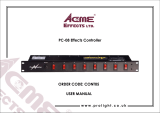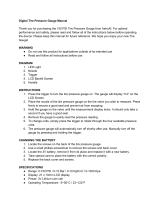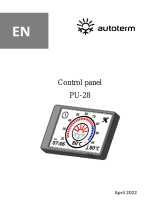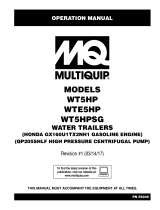
Table of Contents
v
[us] | 01/2021 | 5100059253 | E3000 | Operator’s manual
6.6 Replacing the Burner Nozzle ............................................................................................................... 56
6.7 Setting the "Z" Distance....................................................................................................................... 58
6.8 Adjusting the Air Settings..................................................................................................................... 59
6.9 Adjusting the Fuel Pressure................................................................................................................. 60
6.10 Factory Settings................................................................................................................................... 61
6.11 Factory Settings—Gas......................................................................................................................... 61
6.12 Restrictions for Connecting the Gas Supply ........................................................................................ 61
6.13 Setting up the Burner........................................................................................................................... 62
6.14 Setting Up the Burner—Gas ................................................................................................................ 64
6.15 Removing the Combustion Head......................................................................................................... 66
6.16 Adjusting the Ionization Probe and the Electrode................................................................................ 68
6.17 Changing the Burner Orifice ................................................................................................................ 69
6.18 Changing the Burner Diaphragm ......................................................................................................... 69
6.19 Checking the Burner Air Damper Setting............................................................................................. 71
6.20 Adjusting the Head Setting .................................................................................................................. 71
6.21 Checking the Supply Gas Pressure..................................................................................................... 72
6.22 Checking and Adjusting the Burner Gas Pressure .............................................................................. 73
7 Operation
7.1 External Components .......................................................................................................................... 75
7.2 Internal Components ........................................................................................................................... 76
7.3 Rear Components................................................................................................................................ 77
7.4 Pumps, Gauges, and Valves ............................................................................................................... 78
7.5 Control Panel ....................................................................................................................................... 79
7.6 Control Panel Components.................................................................................................................. 79
7.7 Breaking in the Generator.................................................................................................................... 80
7.8 Checking the Heat Transfer Fluid (HTF) Level .................................................................................... 80
7.9 Recommended Fuels and Fuel Blending Guide .................................................................................. 81
7.10 Before Starting Checks........................................................................................................................ 82
7.11 Starting, Operating, Stopping the Machine—Kohler............................................................................ 84
7.12 Preheating the Heat Transfer Fluid (HTF) ........................................................................................... 85
7.13 Initiating Heat Transfer Fluid (HTF) Flow............................................................................................. 87
7.14 Setting the Operating Temperature ..................................................................................................... 88
7.15 Unwinding and Positioning the Hoses ................................................................................................. 89
7.16 Hose Spacing Guidelines .................................................................................................................... 90
7.17 Monitoring the Operating Parameters.................................................................................................. 91
7.18 Rewinding the Hoses........................................................................................................................... 91
7.19 Resetting a Low HTF Fault .................................................................................................................. 94
7.20 Using the Quick-Connect Coupling...................................................................................................... 97
7.21 Operating States of the Beckett Burner Controller .............................................................................. 98
8 Accessories

























